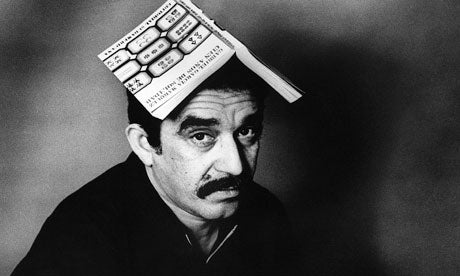Gabriel García Márquez Is Most Translated
Spanish Writer This Century

According to the Instituto Cervantes, which promotes Spanish language and culture around the world, Colombian novelist Gabriel García Márquez has overtaken Miguel de Cervantes as the most translated Spanish-language writer of the century thus far.
Cervantes, author of Don Quixote however remains the most translated writer in Spanish over the previous eight decades.
The findings were announced with the launch of the institute’s new World Translation Map tool (Mapa Mundial de la Traducción, which was recently unveiled at the IX Congreso de la Lengua – the ninth National Spanish Language Congress in Cádiz.
The new tool was created in collaboration with the Spanish government’s directorate for Books and Reading Development and the National Distance Education University’s Digital Humanities Laboratory, using metadata to form a clear picture of which Spanish-language writers are being most widely translated into different languages. It works additionally to trace the history of Spanish translations between 1950 and 2022.
Primarily focusing on 10 different languages: Arabic, Chinese, English, French, German, Italian, Japanese, Portuguese, Russian and Swedish,the institute consulted the Online Computer Library Center’s WorldCat database, which contains 554,858,648 bibliographic records in 483 languages, using this data to build a picture of which Spanish-language writers were being translated.
By monitoring trends in translation, the World Translation Map provides accurate data on the Spanish-language authors who have made the biggest impact on global readership.
Data from the years 2000 to 2021 shows that Gabriel García Márquez, Isabel Allende and Jorge Luis Borges are the top three most translated Spanish-language authors, with Peruvian novelist Mario Vargas Llosa following closely behind.
The map is searchable and takes into account various genres and dates in literary movements. The specific start date takes into account el boom – a time when Latin American writers including García Márquez, Mario Vargas Llosa, Carlos Fuentes and Julio Cortázar gained worldwide notoriety throughout the 1960s and 1970s.
Raquel Caleya, head of culture at the Instituto Cervantes, said the map would eventually be enlarged to hold as many languages as possible.
“The idea was to distill all that data to make that information available and searchable for the public,” she said – adding “We wanted to help researchers – and anyone else – to analyse and visualise large quantities of information in a more efficient way. It will allow us to know what people are reading, what they’ve read – and to pay tribute to the all the translators who are working to disseminate books translated from Spanish since 1950.”





